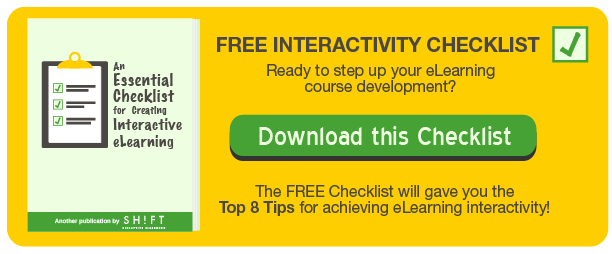eLearning developers, educators and HR departments have been trying for years to attract attention for their learners and come up with innovative ways to engage them. One idea after another is implemented in the hopes that each course finishes with excellent results. But why so many fail? In this post, we want to share with you what most eLearning developers miss when creating an eLearning course.
What’s In It For Me?
 These five words (WIIFM) help you make almost every choice, and in the eLearning world that's no exception. So why many courses constantly forget to include this key ingredient?
These five words (WIIFM) help you make almost every choice, and in the eLearning world that's no exception. So why many courses constantly forget to include this key ingredient?
If the eLearning course does not answer this main question students will not be interested or motivated to go through the content, no matter how great it looks. Therefore, to ensure that your audience feels engaged we must be create courses your learners want to be in. If you don’t create a program that gives them the benefits or solutions they look for --they aren’t going to complete it, or even worse, they aren’t going to learn anything.
Treat the learning experience as a customer experience
If we compare the eLearning experience with a customer experience, you will be surprised how similar they are. When talking about great customer experiences, they say a memorable-focused experience will set you apart from the competition. If customers feel they’re getting more, they’ll be willing to pay more. The same happens in eLearning, if you create relevant, meaningful and memorable learning experiences, students will definitely become attracted since the beginning and keep coming back for more. Contrary to this, as soon as they feel part of the experience is not to their liking or convenience, you will lose them.
How Can You Know Learners Better?
-
Know what they want: Start designing the course taking into consideration your audience. You can design and plan your course based on what your students’ goals are.
-
Know what to focus on: What content? When? How should you present it? Focus on how your students learn, what formats do they prefer and what are their reactions to other types of content.
-
Know how they behave and how they use information: You won’t know what the best use cases are if you don’t spend time with your learners. They’ll give you insight in how they use content.
Action Steps:
-
The Need to Know. Adults want to know why they need to learn something before undertaking learning. So, once you have a meaningful and valuable course, it’s time you promote it.
-
Connect Learning to Previous Knowledge: Relate new knowledge with existing knowledge of the students and explain how it helps them do their job easier, faster and appealing.
-
Listen and Observe: Pay careful attention to feedback you recieve and insist your team to pay close attention as well. Understand and listen!
Focus on capturing the attention of students and clearly understand why the course is for them and what's in it for them. If you grab learners’ attention up front and consistently reiterate the WIIFM throughout your course, you’ll undoubtedly get them engaged and motivated.
Start Today Tip: Study your audience first, hook up with learners to get a better feel for the course design. Try to spend a few minutes talking to the people who will take the course and you will see how that will make the difference in your courses.




